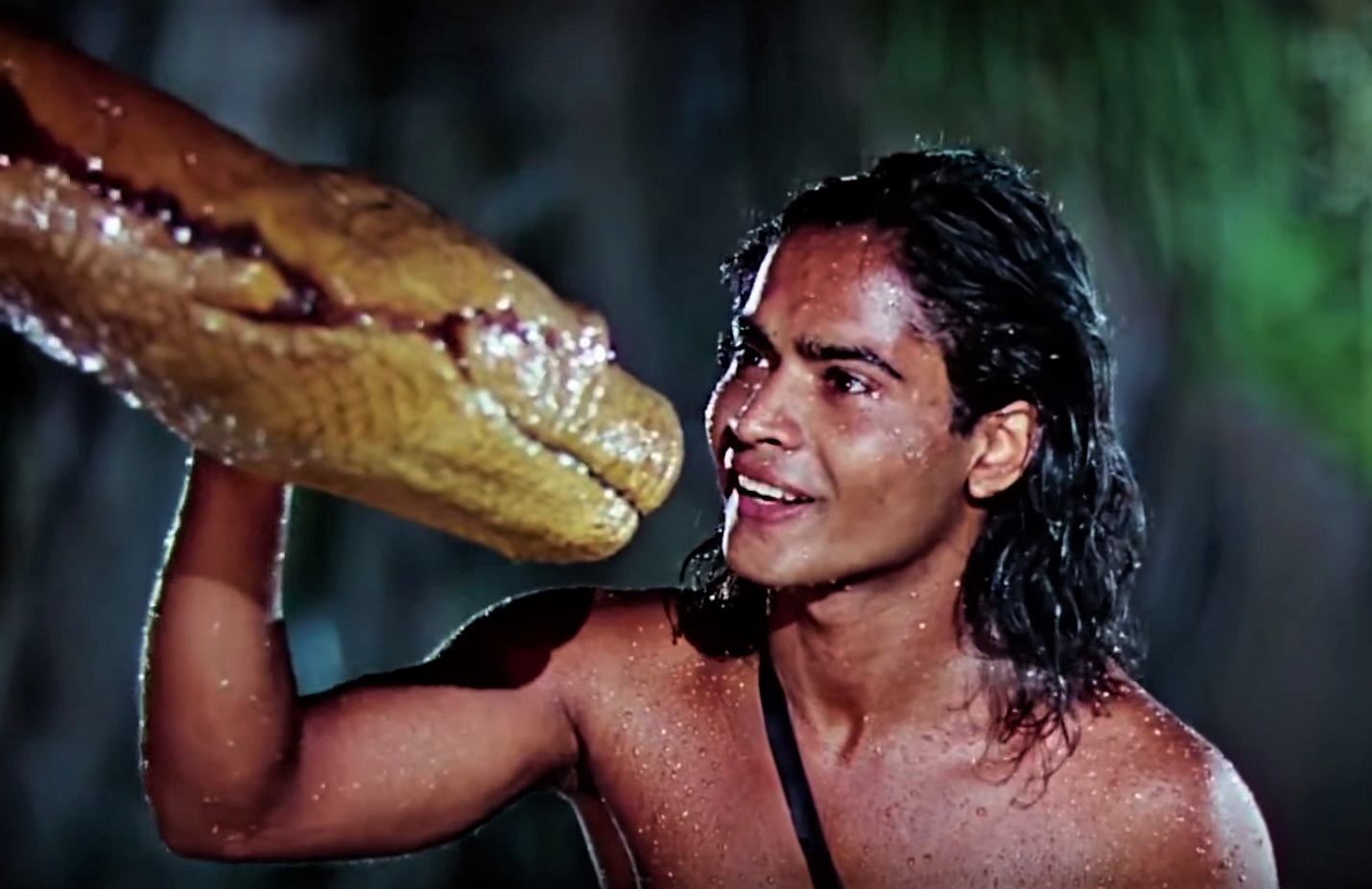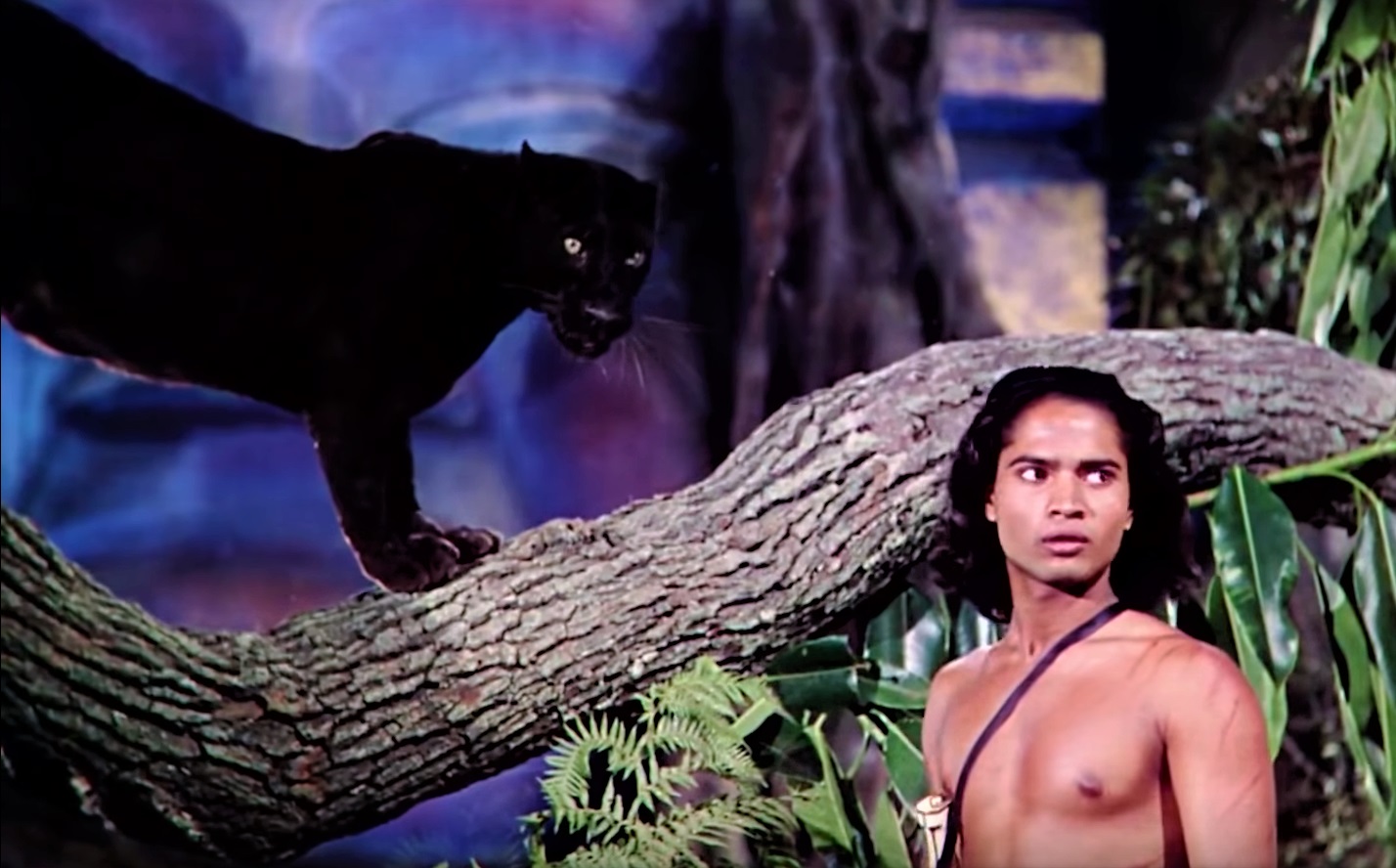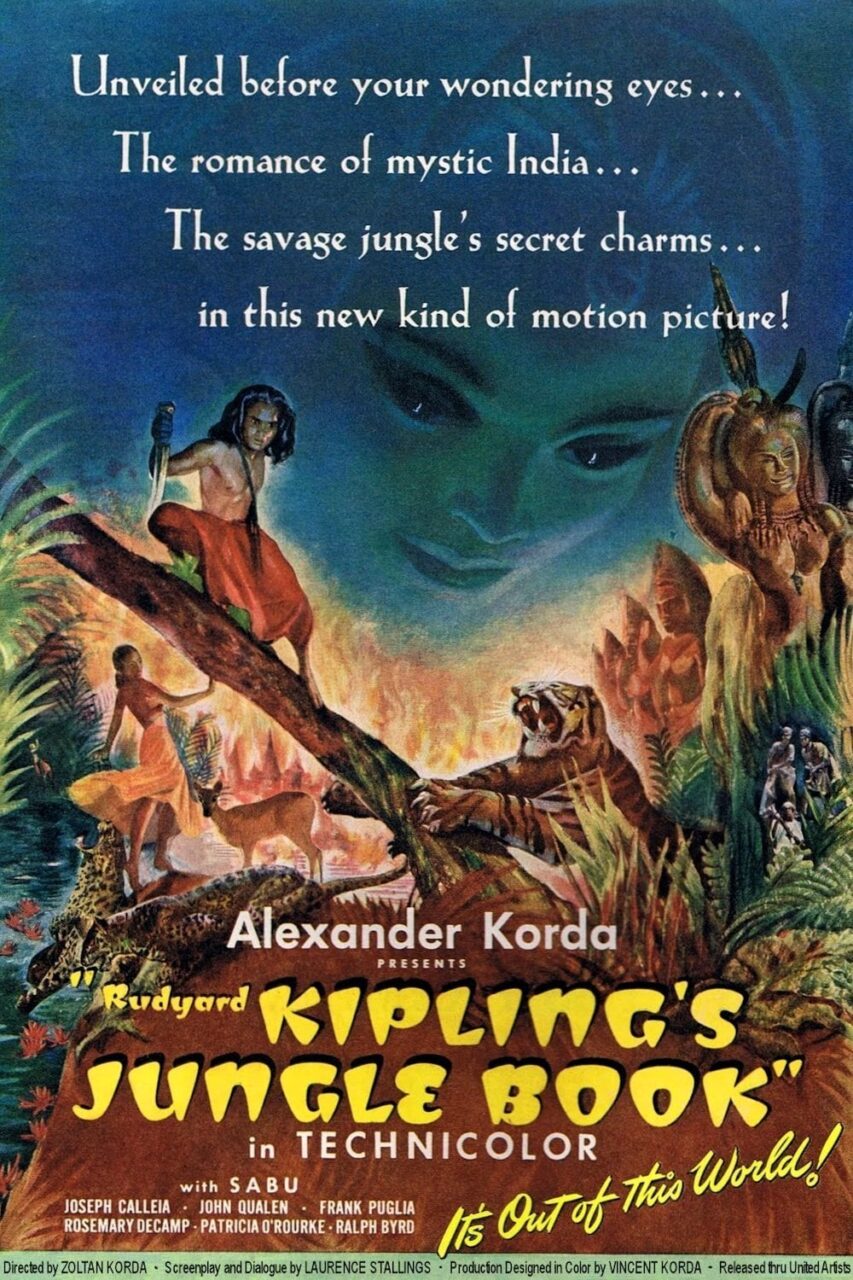Crew
Director – Zoltan Korda, Screenplay – Lawrence Stallings, Based on the Novel by Rudyard Kipling, Producer – Alexander Korda, Photography – Lee Garmes & W. Howard Greene, Music – Miklos Rozsa, Special Effects – Lawrence Butler, Makeup – Gordon Bau, Production Design – Vincent Korda. Production Company – Alexander Korda Films.
Cast
Sabu (Mowgli), Joseph Calleia (Baldao), Patricia O’Rourke (Mahala), Rosemary De Camp (Messua), John Qualen (The Barber), Frank Puglia (The Pundit)
Plot
An old Indian man tells a British woman the story of the jungle boy Mowgli. In an Indian village, the young child Natu wandered away into the jungle and was believed by the villagers to have been killed by the evil tiger Shere-Khan. Instead however, the child was found and adopted by a tribe of wolves. Named Mowgli by the wolves, the child grew into a young man. One day, Mowgli came upon the village once again. His mother recognised him as the child she lost and welcomed him back home. Mowgli’s ability to talk to animals made him an object of fascination by the other villagers. He and the young Mahala were attracted, although Mahala’s father Baldao regarded Mowgli as a savage animal. Mowgli took Mahala into the jungle and showed her the ruins of a lost city that contained a vast treasure horde. Trouble ensued when she returned with a gold coin and Baldao became ruthlessly determined to make Mowgli show him the location of the treasure.
Rudyard Kipling’s Mowgli stories are some of the most loved of all British children’s tales. Rudyard Kipling (1865-1936) grew up in India and returned there in adult life to edit a newspaper. The colonial myth of India is something that underscores much of Kipling’s work. Kipling worked as a journalist and in the 1880s turned to writing fiction. His novels include Captains Couregeous (1897), Kim (1901) and other children’s works such as Just So Stories (1902) and The Puck of Pook’s Hill (1906). Kipling’s work soon became celebrated and he was awarded the Nobel Prize for literature in 1907 and later declined the offer of the title of British Poet Laureate. During his lifetime, Kipling was as celebrated as much as a poet as he was a novelist – he wrote the classic poems Gunga Din (1892) and The White Man’s Burden (1899). Kipling’s work is less popular today where it is seen that he upholds a strongly pro-British imperialist outlook towards the Asian subcontinent and views that have been argued as being at times racist.
The Mowgli stories, which appeared in two collections, The Jungle Book (1894) and The Second Jungle Book (1895), are his most famous works. Although ironically what is known of the Jungle Book stories today mostly comes through the bowdlerised Disney animated film, The Jungle Book (1967), which is very different from the original tales.

This lavish colour production of the Rudyard Kipling stories was made by the Korda family. Producer Alexander Korda might be said to have been the Dino De Laurentiis of the 1940s. Originally a film critic in his native Hungary, Alexander Korda became a director in 1914 and then founded his own film studio. Korda’s career as a producer began proper after he moved to England in 1931 and with the formation of his London Films production company in 1933. Korda made a number of lavish epics and was largely instrumental in transforming the British film industry into a major international player that could compete with Hollywood product. Alexander Korda produced such films as The Private Life of Henry VIII (1933), The Scarlet Pimpernel (1935), The Ghost Goes West (1935), Rembrandt (1936), two collaborations with H.G. Wells Things to Come (1936) and The Man Who Could Work Miracles (1937), The Four Feathers (1939) and The Thief of Bagdad (1940), among others. Korda had also made an earlier Kipling jungle story Elephant Boy (1937), which had also starred Sabu.
Jungle Book was a spectacular production for the day. Vast sets were constructed for the film, including an Indian village, a colossal lost city and even an entire jungle built up around a studio lot. The Kordas also appear to have gone on location to India for some the film where they have corralled a supporting cast of genuine Indians (no extras with browned-out faces here). The film is scored with a lush, epic note (for which it won an Academy Award). The animal scenes are beautifully photographed and the jungle is alive in bright, sumptuous Technicolor colours of all description (the photography also won an Academy Award).
Much of this would have looked a great deal more impressive and expansive during the era when Jungle Book first came out, whereas today such spectacle has become commonplace. As it is, there are some still exciting scenes with Mowgli wrestling the snake underwater and a fabulous climax with an animal stampede and the burning of the village and the lost city. It is worth comparing Jungle Book to the Johnny Weissmuller Tarzan films that were being made around the same time as this – while the sense of adventure in the Tarzan series never extended much beyond stock animal footage and back-projected jungle scenes, Jungle Book is a jungle adventure that comes in full colour and with a genuine flavour of authenticity.

Sabu has a wonderfully primal quality as Mowgli and is near-perfect in the role. (Born Sabu Dastagir, Sabu was a native Indian actor, the first to find success in Hollywood. He was discovered by Alexander Korda with Elephant Boy and played several other roles for him, including the title character in The Thief of Bagdad, although for the rest of his career never moved beyond playing stock Indian parts in various adventure films).
More disappointingly, the animal scenes only consist of animal footage or of rubber snakes suspended on wires. Only the King of the Cobras and Kaa the snake speak in this version and as a result the non-human characters never fully come alive – Disney had a much greater advantage with their version where they animated the animals. Nevertheless, Jungle Book is an impressive spectacle.
Rudyard Kipling’s Jungle Book tales have proven popular on film. Disney filmed the book twice – as the animated The Jungle Book (1967) and then as the live-action The Jungle Book (1994) starring Jason Scott Lee. The latter produced a theatrical sequel The Second Jungle Book: Mowgli & Baloo (1997) and a tv movie spinoff The Jungle Book: Mowgli’s Story (1998), while the animated film was followed by a belated sequel The Jungle Book 2 (2003). The Jungle Book (2016) and Mowgli (2018) were further live-action remakes.
Trailer here
Full film available online here:-


